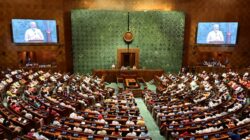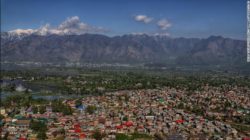BALASORE, INDIA — According to India’s railways minister, the train crash in eastern India that killed more than 300 people and injured hundreds more was caused by an error in the computerised signalling system that allowed a train to incorrectly change tracks.
”Who did it and why will be revealed via an investigation,” Ashwini Vaishnaw stated in an interview with New Delhi Television network.
Authorities were working to clean the twisted wreckage of two passenger trains that derailed Friday night in the Balasore region of eastern Odisha state, in one of the country’s deadliest rail catastrophes in decades.
Preliminary investigations found that the high-speed Coromandel Express was granted a signal to enter the main track line, but the signal was later removed, and the train instead entered an adjacent loop line, colliding with a goods train.
The Coromandel Express coaches were flipped onto another track, causing the inbound Yesvantpur-Howrah Express from the opposite side to derail, resulting in a three-train accident.
The passenger trains carried a total of 2,296 people.
Trains carrying goods are frequently parked on an adjacent loop line on the side, leaving the main route clear for a passing train.
On Saturday evening, fifteen bodies were found, and operations continued overnight as large cranes were employed to remove an engine that had landed on top of a rail car. No bodies were discovered in the engine, and the work was concluded on Sunday morning, according to Sudhanshu Sarangi, Odisha’s director-general of fire and rescue services.
The disaster happened at a time when Prime Minister Narendra Modi is focusing on modernising India’s British colonial-era railway network, which has grown to become the world’s most populated country with 1.42 billion people. Despite government efforts to improve rail safety, several hundred accidents occur on India’s railways each year, the world’s largest train network under one control.
Rescuers climbed atop the wrecked trains on Friday night, using cutting torches to blast through doors and windows in an attempt to save individuals trapped within the rail cars.
On Saturday, Modi visited the disaster scene to assess the relief effort and speak with rescue personnel. He then went to a hospital and spoke with some of the patients as well as doctors about the treatments offered to the injured.
Modi informed reporters that he understood the anguish of the victims of the catastrophe. He stated that the government will do all possible to assist them and would strictly punish anyone proven to be culpable.
One train’s ten to twelve coaches derailed, and debris from several of the wrecked coaches landed onto an adjacent track. According to Amitabh Sharma, a Railroad Ministry spokeswoman, the debris was hit by another passenger train approaching from the opposite way, causing up to three coaches on the second train to also derail.
In one of India’s worst train accidents, two trains collided outside New Delhi in 1995, killing 358 people. A passenger train derailed between the towns of Indore and Patna in 2016, killing 146 persons.
The majority of train accidents in India are attributed to human error or antiquated signalling equipment.
Every day, almost 12 million people ride 14,000 trains across India, covering 64,000 kilometres (40,000 miles) of track.










